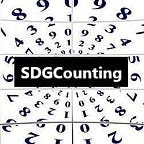What’s the Story Behind the Story? COVID-19 Data
By Ben Kickert
With the COVID-19 pandemic dominating the headlines across the world, often with conflicting angles, people are looking to public data to try and get the real story.
Whether you regularly check the stats on Worldometer, or prefer the more visual cartography work done by Johns Hopkins, people everywhere are exploring global data in unprecedented new ways. Not only is the information accessible, but many are realizing how the information directly informs their current situation.
Today we explore some of the data trends emerging and look into the larger narrative around coronavirus data collection and dissemination.
Data Contributions are Coming from Likely and Unlikely Sources
The traditional sources for public health data such as the CDC and WHO have all created resources and information dashboards to keep the public informed on the COVID-19 situation. However, it is some of the major global tech companies who have made headlines with their contributions.
Companies like Apple and Google have made their mobility data available for improved understanding of community behavior. According to an article in Science magazine from earlier this month:
“These data can help refine interventions by providing near real-time information about changes in patterns of human movement…The estimates of aggregate flows of people are incredibly valuable. A map that examines the impact of social distancing messaging or policies on population mobility patterns, for example, will help county officials understand what kinds of messaging or policies are most effective. Comparing the public response to interventions, in terms of the rate of movement over an entire county from one day to the next, measured against a baseline from normal times, can provide insight into the degree to which recommendations on social distancing are being followed. We will need these estimates, not only now but also when we need to resume life again without risking a major resurgence.”
The article also emphasizes the importance of protecting personal privacy going so far as to state individual data should not be used.
Another example of corporations leveraging their data for novel purposes is seen as Facebook partners with Carnegie Mellon to create a symptom map as a way to supplement testing data.
Within the traditional public health sector, scientists, programmers, and data experts around the world have pivoted their work to assist in the response. The stories of the people and groups working in these areas paint a picture of expertise combined with passion and compassion.
There is a Focus on Data Quality and Long Term Benefits
In a recent article, the World Economic Forum explored why data is more important than ever: “We cannot defeat what we can’t understand [so] we need to create open-source structures that allow national and sub-national level health systems to collect and share this precious data in a timely, privacy-preserving manner.” This, they contend, requires global entities to take the lead to provide the authority as well as the technical skill to succeed.
“Let us be proactive not just in creating more hackathons and social impact funds but a true, coordinated revolution in global, open-source data sharing that can help us all have a fighting chance against COVID-19.”
The influx of new data approaches, coupled with recent changes such as citizen-science initiatives and the growing role of geo-imagery to track large scale changes, have the potential to greatly improve global data tracking. However, understanding how these new systems work in conjunction with older systems will be essential. In particular, the role of National Statistics Offices (NSOs) will need to be fluid and complementary.
“Experts said NSOs’ mandate has evolved significantly in the past few years; no longer just producers of data, they are now responsible for coordinating a broad data ecosystem of entities across government, civil society, and the private sector, and for brokering new partnerships to produce, clean, compile, and analyze data to produce official statistics. In effect, NSOs have become “data stewards.”
— IISD: Data Experts Say New Sources Must Not Replace Traditional Data
Helping the Public Understand COVID-19 Data
While the increased interest in and availability of public health data is something we should all be encouraged by, daily news sources are presenting data concepts that the average person may not be familiar with. To help with the understanding, Cory Franklin, a doctor and journalist, has outlined 8 rules for understanding the data around COVID-19 in a recent piece published in the Chicago Tribune. His insights include:
- All models are wrong. Some are useful.
- Long-range projections are typically less accurate than short-range projections.
- Numbers are representation of reality, not reality itself.
- Numbers require context. Adjust numbers to the size of the population.
- There is no perfect number.
- Trends are more important than single values.
- Beware of cherry-picking
- Understand that there are many unknowns.
We will continue to track how data is being used as a tool in combating COVID-19 as well how the Sustainable Development Goals are being effected.
Ben Kickert has worked in international development and data analytics for 15 years. He currently works as a consultant providing insights around the Sustainable Development Goals and Impact Investing.
